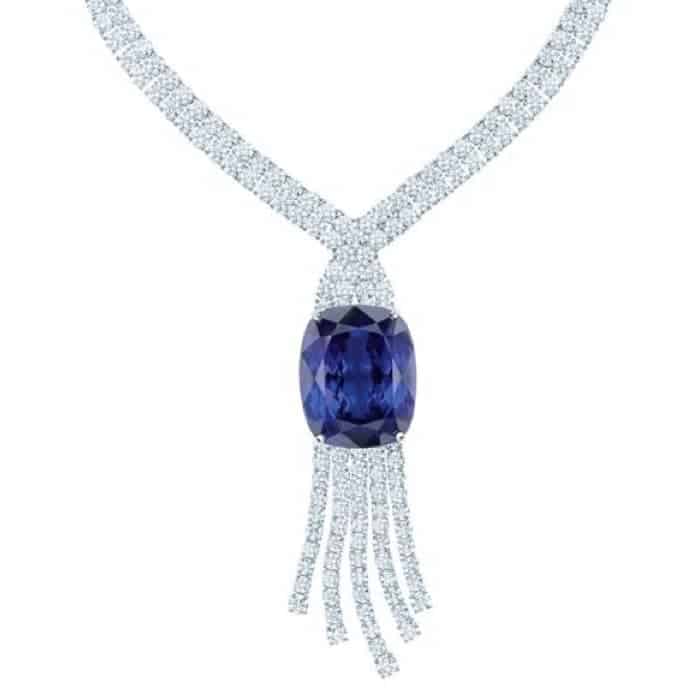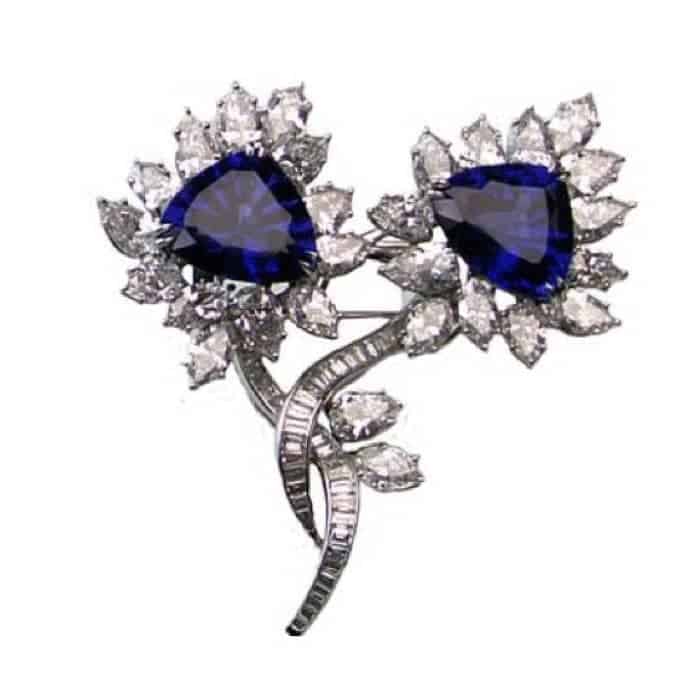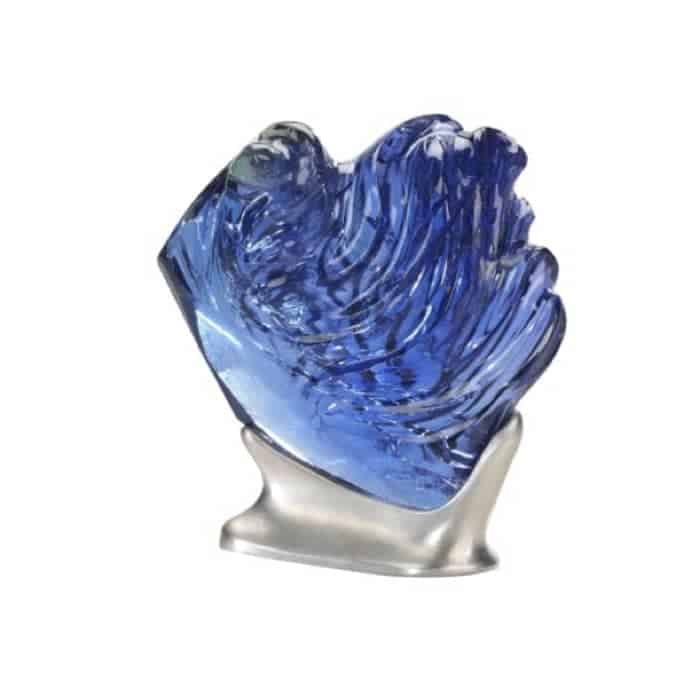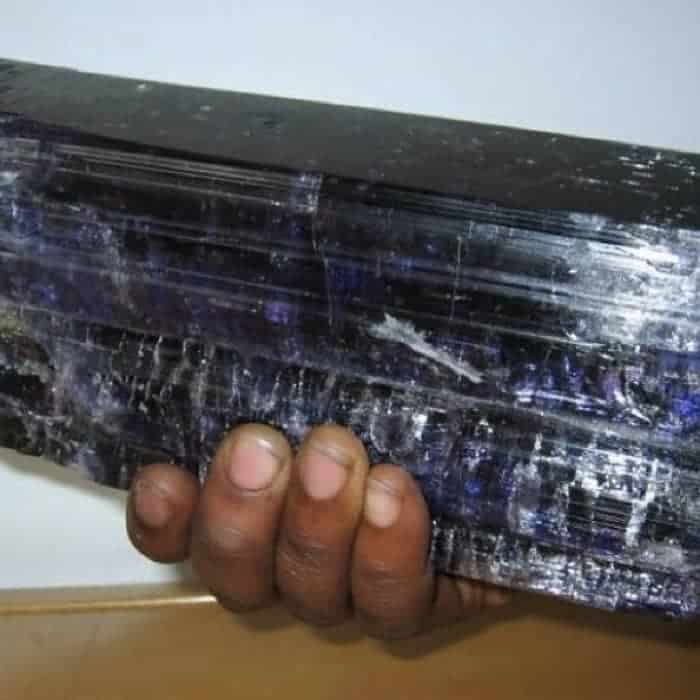Take a look at our New Arrivals: a variety of selections now available!

Based on the Moh’s scale of hardness, Tanzanite is 6.5 to 7 meaning it is a slightly soft gemstone needing to be treated with care, similar to Emerald although less brittle, Diamond is the hardest gemstone, scoring a 10 on the scale.
With just a single source and limited supply, it is believed that with the current mining rate, there remains approximately only 15 to 20 more years of Tanzanite in the ground. Ultimately, this indicates that beyond our present generation, the mining of Tanzanite will cease thus those purchasing today are the last generation of first-hand buyers of this precious gemstone.
Whether a Tanzanite is a blue or violet stone is determined by which axis the face of the stone is cut as you can see both colors when you turn the stone around. As it is the same stone there is no difference between the value of one over the other. It is purely down to personal preference.
It should be assumed that all Tanzanite purchases have been gently heated, with the exception of some stones that were found close to the surface in the early days of discovery. These stones were a gem-quality blue without the need for heat treatment as they had already naturally been exposed to heat in the likely form of volcanic activity or bush fires. Today’s gentle heating process is merely a continuation of what Mother Nature began.
Tanzanite is a variety of Zoisite of which the color is brought about by the presence of Vanadium in the gem. When cut and polished, it becomes a dazzling kaleidoscope of royal blue, indigo and periwinkle. Gem Zoisite crystals with other mineral residues inside, such as manganese, chrome or iron, change the composition of the gems causing other colors. These are referred to as Fancy Stones.
Fancy Stones are found in many colors and color combinations. These stones are extremely rare as they are only found sporadically in very small quantities, with pink being amongst the rarest and most highly sought by gem collectors.
New York’s renowned Jewelers, Tiffany & Co, heard about the discovery in Tanzania and were the first to bring the dazzling new gemstone to the world. They christened the new find “Tanzanite” after its country of origin, declaring it to be the most beautiful blue stone to be discovered in over 2000 years. They proudly stated that Tanzanite could only be found in two places on earth, and that is in Tanzania and at Tiffany’s.
Selecting the color of your Tanzanite is a matter of personal preference. The bluest hues are among the rarest, but tanzanite in all shades, from flattering lilac and cornflower blue to deep blue, indigo and violet, continue to enchant discerning jewelry buyers seeking exceptional beauty and distinction.
Like all precious gemstones, Tanzanite should be treated with care to preserve its beauty and value. You can read more about this in our Tanzanite Buying Guide. Ultrasonic cleaning and abrasive cleaning solutions should be avoided. Tanzanite should be cleaned using a small, soft brush and warm, slightly soapy water.
Gently clean the upper and underside of the Tanzanite, and dry carefully with a soft, clean cloth. Tanzanite should not be exposed to sudden extreme temperatures and should be stored in a protective pouch or box separately from other jewelry. When jewelry is being altered or repaired, the Tanzanite should be removed from its setting beforehand.
Geologists currently estimate that the world’s only known source of Tanzanite will run out within one generation. Those who buy Tanzanite within our time will, therefore, be the last of its first-hand owners. If you want to start investing in Tanzanite, take a look at our latest Tanzanite collection
Absolutely! Traditionally, a gemstone must have three important traits to be classified as precious: beauty, rarity and durability. Tanzanite possesses both beauty and durability, and is more than one thousand times rarer than a diamond. Tanzanite is therefore precious in every sense of the word.
Tanzanite is found in a unique kaleidoscope of blues and violets, from deep, dark royal blue with flashes of red, to indigo, cornflower, and periwinkle. The flattering cornflower blue and lilac shades are hugely popular, and a very affordable option.
One of Tanzanite’s properties is that it has a similar hardness to an emerald, but is less brittle. In order to preserve its beauty, simple precautions should be taken, such as avoiding wearing Tanzanite during activities that inflict excessive wear and tear. Tanzanite is ideally suited to be worn for special occasions in dress rings, earrings, and necklaces.
The extraction of the rough Tanzanite stone is conducted through underground mining. There are many large, medium and small, artisanal mining operations in the Merelani district. This includes complexly structured mining and distribution systems for Tanzanite which have evolved over time. Once gem crystals are mined, they are taken to local brokers in the nearby town of Arusha, where they are sold/traded and mostly exported for cutting and distribution.
You can read our article on how Tanzanite is mined to get more in-depth information. A fact about Tanzanite is that the price fluctuates based on local laws. For instance, new Tanzanian laws are attempting to restrict the export of rough Tanzanite crystals over 1 gram, which will encourage the development of local cutting factories, enabling the Tanzanian people to be more involved in the ‘mine-to-market’ flow of Tanzanite.
Extensive geological research indicates that the chances of finding tanzanite in another part of the world are “less than one in a million.”
Tanzanite should be purchased from a reputable dealer and/or should be graded in a laboratory. All Tanzanite gemstones purchased from The Tanzanite Experience come with their own laboratory certificate from The Tanzanite Laboratory.
Tanzanite is the birthstone for December. In 2002, the AGTA (American Gem Trade Association) added the precious stone to its list of birthstones that had been unchanged since 1912. They announced that Tanzanite is the birthstone for the month of December. However, irrespective of the month of their birth, Tanzania’s Maasai women are honored with blue and violet beads when blessed with childbirth – this bestows upon their children a healthy and prosperous life. Following in this tradition, the gift of Tanzanite on the birth of a baby uniquely symbolizes new beginnings and pays tribute to those who have shown the greatest of love by becoming a parent.
All our Tanzanite Experience stores offer duty-free shopping.
Please note that you will be required to produce your passport and the copy of the stamp at your arrival in Tanzania. This offer is only applicable to foreigners and non-resident.




The Tanzanite Experience has its own mine and follows a strict code of ethical mining and best practice. This ensures that the best of the Tanzanite’s attributes are preserved.
From 1967, an estimated two million carats of Tanzanite were extracted before the mines were nationalized by the Tanzanian government in 1971.
In 1990, the Tanzanian government split the mines into four sections: Blocks A, B, C and D. Blocks A and C were awarded to large operators, while Blocks B and D were reserved for the local miners.
As of June 2003, the Tanzanian government introduced legislations banning the export of unprocessed Tanzanite to India where like many gemstones, most Tanzanite was being cut in Jaipur. This ban was an attempt to encourage the development of local skills in order to boost the economy.
By 2010, the government of Tanzania banned the export of rough stones weighing more than one gram.
One of Tanzanite’s complexities is that a rough piece of Tanzanite on average only yields 25% of usable material. Therefore, there is an enormous pressure on the cutter to ensure that he can maximize return on investment by choosing the best shape, whether that be a simple cabochon, or a more elaborate trilliant or princess cut.
First, the stones are mounted onto ‘dop sticks’ and then the facets are cut and polished over the entire surface of the stone using a highly- symmetrical pattern.
The dop stick is inserted into a handpiece that allows precise control over the positioning of the stone. The facets are then ground, sanded and polished on a rotating lap containing ground diamond, while water acts as a coolant.
When one side (top or bottom) of the stone is finished the stone is then transferred to another dop stick, and the process repeated on the other.
Tanzanite's features are tested to ensure that only the best are made available to the public.
The Tanzanite grading system is done based on the 4Cs principle, in the same way that diamonds are graded. The color, cut, clarity and carat weight of the individual stone is taken into consideration, and the result recorded on to a unique certificate which accompanies the stone. The greater the combination of the 4Cs, the higher the quality and corresponding value of the Tanzanite.
See our Buyers Guide for more information.